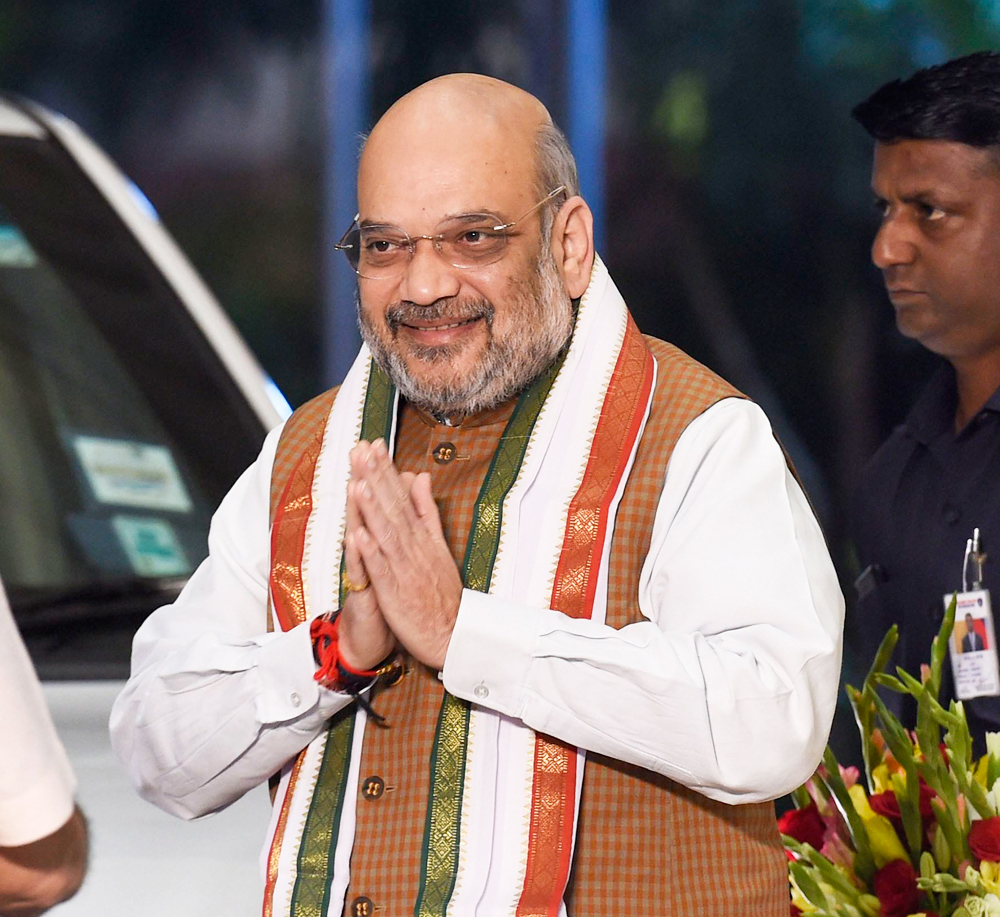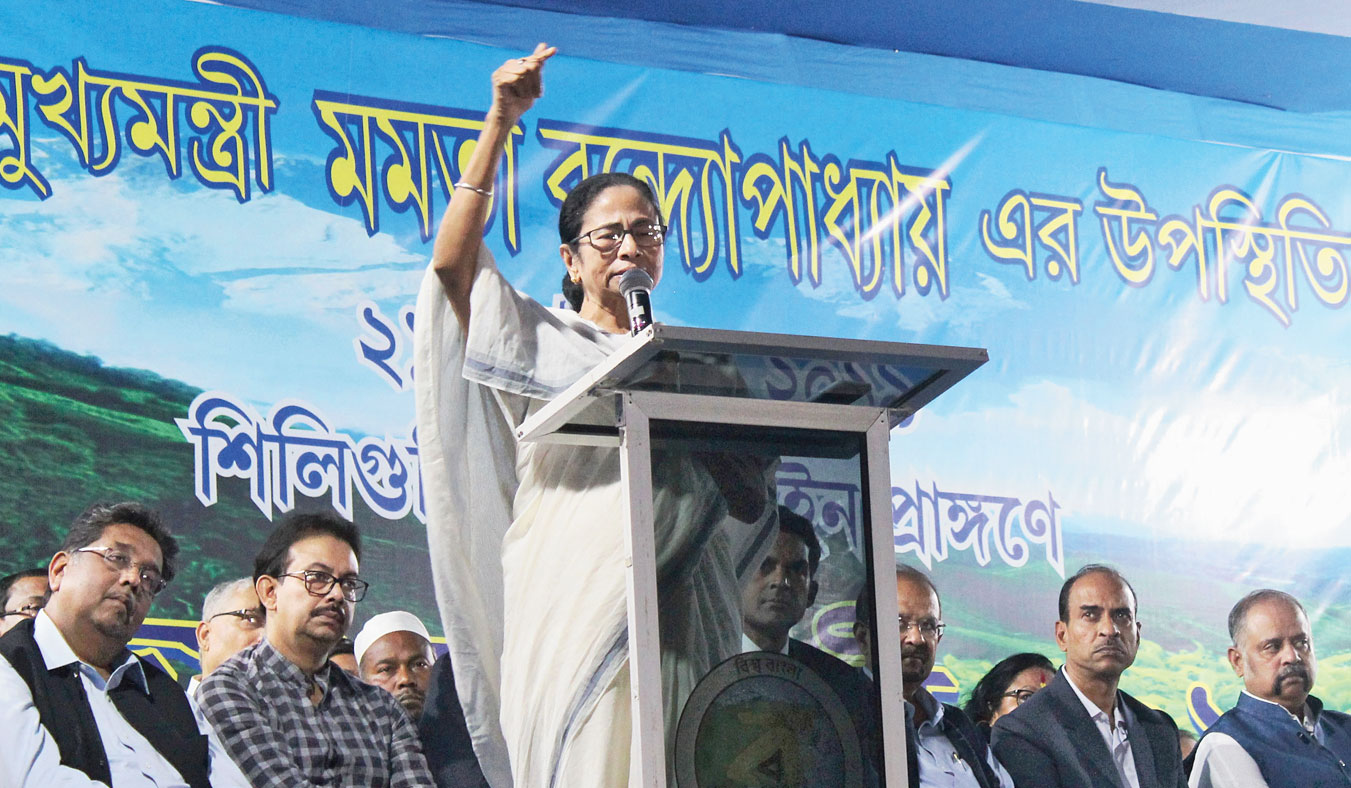The Bharatiya Janata Party’s contribution to policy-making can be divided into three parts: continuity, spectacle and communalized change.
There are passages of continuity between the United Progressive Alliance and the National Democratic Alliance in the domain of policy. Three obvious examples are the MGNREGA, Aadhaar and GST. These were signature policies initiated by the UPA that were adopted by the NDA. Aadhaar was adopted enthusiastically because the NDA, even more than the UPA, is keen on collecting big data about desis for governance and surveillance. MGNREGA was adopted grudgingly because Narendra Modi came to power as an enemy of subsidy and dependency, who explicitly saw the MGNREGA as the embodiment of both evils and who wanted to do away with it. Given the catastrophic decline in income and livelihood in rural India, he was forced to accept the logic behind the rural employment guarantee scheme. And having loudly opposed the UPA’s bid to introduce the goods and services tax, the NDA passed its own baroque version.
There are several other examples of Modi’s government repackaging prior schemes, renaming them and marketing them as new avatars of progress but to its credit, these schemes are more visible, better advertised and often more vigorously and expansively implemented.
The Modi government’s claims to policy novelty, its departures from the UPA norm, are driven by its attachment to the spectacular and its commitment to a majoritarian remaking of the republic.
The BJP’s investment in spectacle isn’t hard to illustrate. The most notorious example of this is Modi’s bizarre act of national self-harm, demonetization. There’s no question that demonetization was an entirely original contribution to currency policy but quite apart from the harm it caused, what makes it revelatory is the mess of justifications that the BJP offered at different times: demonetization as anti-corruption, as an anti-black money drive, demonetization as a catalyst for digital payment, demonetization as a way of generating an RBI windfall that could be spent on development.
Demonetization wasn’t a mistake in the service of an ideological agenda: it was a huckster’s trick, a way of capturing the nation’s attention by making money disappear in a higher cause. There is a reason why Modi’s mentors for this disastrous move weren’t economists, but chartered accountants. It wasn’t as if there weren’t credentialed economists who had written in favour of demonetization. Kenneth Rogoff had written a whole book arguing in favour of it. Modi made no attempt to consult the literature because economists like Rogoff saw demonetization as a transparent measure gradually introduced over years, not as a gasp-inducing magic trick.
There are other instances of this investment in the spectacular. The gigantic statue of Vallabhbhai Patel is one. The BJP’s long-standing plan to link all of India’s major rivers in one river system is another. There’s no ecological or economic rationale for this project, but there is a shrewd assessment of the PR value of knitting the nation together with symbolic colossei and interlocking rivers.
The need for spectacle springs from the fact that the BJP needs to compensate for an ideological emptiness at the heart of its project. This is an odd thing to say about an organization that is seen as the embodiment of ideological consistency from the moment of its foundation, but it’s true.
Think of economic policy. Many of Modi’s early boosters, corporate leaders and pundits alike, expressed disappointment in his failure to be the business-friendly reformer that they expected him to be. The standard lament is his failure to privatize Air India. Their hope was unfounded. Neither the RSS nor the BJP or Modi has any commitment to ‘liberalization’ as an ideological project. Modi in Gujarat was interested in investment that he could handpick and manage: not privatization or free enterprise as a principle. The BJP has tacked between the autarky of the Swadeshi Jagran Manch and McKinsey-style rhetoric about globalization. It is committed to neither.
Apart from its experiments in the spectacular, what sets the BJP apart in policy and institutional terms is its guiding principle: the subordination and marginalization of Muslims. The BJP isn’t ideologically ‘fat’. All the policy positions that are peculiar to it and, therefore, original derive from one lean but laser-sharp commitment: the determination to re-make the republic in the image of a Muslim-stifling Leviathan.
Consider the three most consequential projects of the NDA about to come to fruition: the imminent ruling of the Supreme Court on the Babri Masjid dispute; the bid to make the National Register of Citizens a pan-Indian institution and the government’s bid to reintroduce and pass the citizenship (amendment) bill. From the government’s point of view, all three initiatives show Muslims their place and Hindus their pre-eminence. Should the Supreme Court rule to award the site of the razed mosque to the Hindu parties to the dispute, the BJP and its affiliates will claim that the institutions of the republic had shown proper deference to Hindu feeling. The beliefs of a religious majority must prevail because they are, from a Hindutva perspective, constitutive of the nation. And should the NRC, twinned with the CAB, become an all-India institution, the BJP will have successfully created a religious test for citizenship.
Projects like these, driven by an ideology that can only be described by a term as literal as its target — anti-Muslimism — are the BJP’s claim to policy originality. The rest is variable noise. And this doesn’t need to be inferred: the BJP’s leaders say as much. The home minister speaks of the way the CAB-NRC pincer will cleanse India of termites and infiltrators. This is what the BJP wants to be remembered for: defining illegals as Muslims and purging them and then forcing the main body of Indian Muslims to prove to an inquisitorial, all-India NRC that they are, in fact, Indian.
The policy distance between Vajpayee and Modi is the ideological difference between Deendayal Upadhyaya and Madhav Sadashiv Golwalkar. The Rashtriya Swayamsevak Sangh and its political spawn had sat out anti-colonial nationalism and had no usable political vocabulary of their own. They could scarcely use the political terminology of the central European Right that had so inspired Golwalkar given the subsequent career of Nazism.
As a result, the sangh’s political front, the Bharatiya Jana Sangh, was forced to adapt the available vocabularies of Gandhian nationalism and republican liberalism for its own political ends. Deendayal Upadhyaya’s ‘Integral Humanism’ (the BJP's official ideology) was a half-hearted attempt to assimilate Gandhi to Hindutva. Notice the attempt to appropriate the vaguely liberal term, ‘humanism’, to a doctrine which, to the extent that it means anything at all, is deeply hostile to liberalism’s principal tenet, individualism. This milquetoast majoritarianism was the Jan Sangh’s bid to achieve political respectability in the 1960s.
But India in 2019 is a very different place. The former chief justice of India, J.S. Verma, certified Hindutva as a form of non-communal nationalism in a landmark Supreme Court judgment in 1995. V.D. Savarkar’s portrait hangs in the Central Hall of Parliament. Narendra Modi has won his second parliamentary majority. Having served his purpose, Upadhyaya’s dissembling has been discarded for Golwalkar’s feral majoritarianism, his explicit view of non-Hindu as helots in a Hindu India, “… wholly subordinated to the Hindu nation, claiming nothing, deserving no privileges, far less any preferential treatment, not even citizens rights.” The CAB is Golwalkar’s anathemas turned into legislation. There’s a name for the genre of music that gives the BJP its rancorous themes. Tubop: the unfinished business of Partition.













